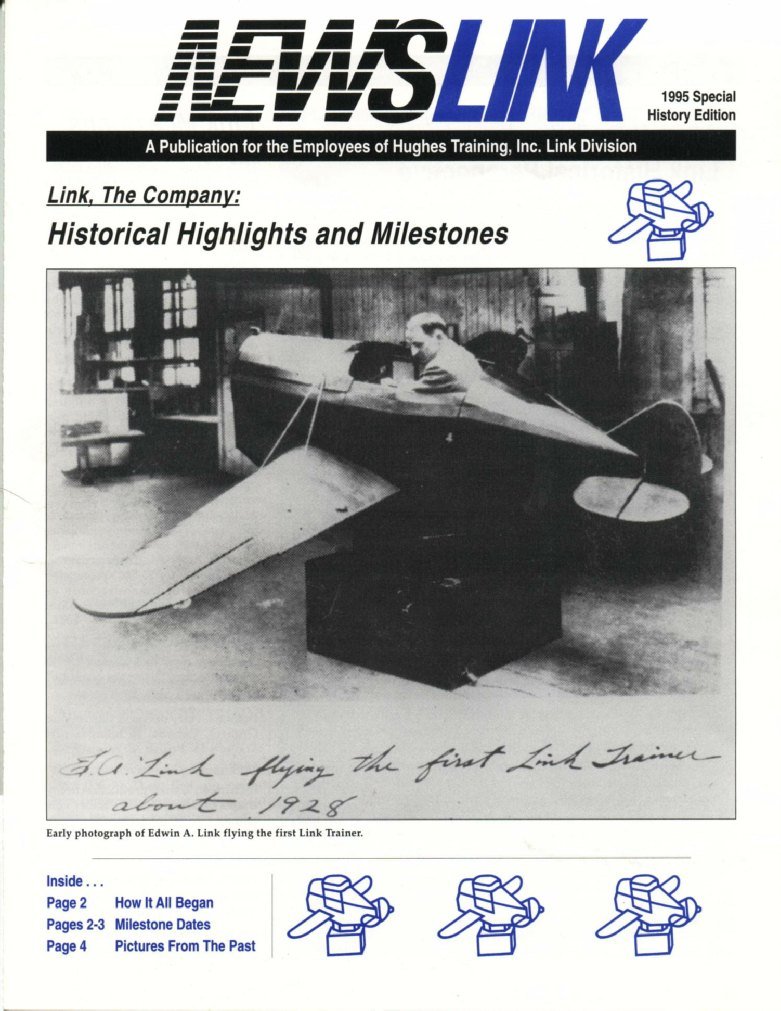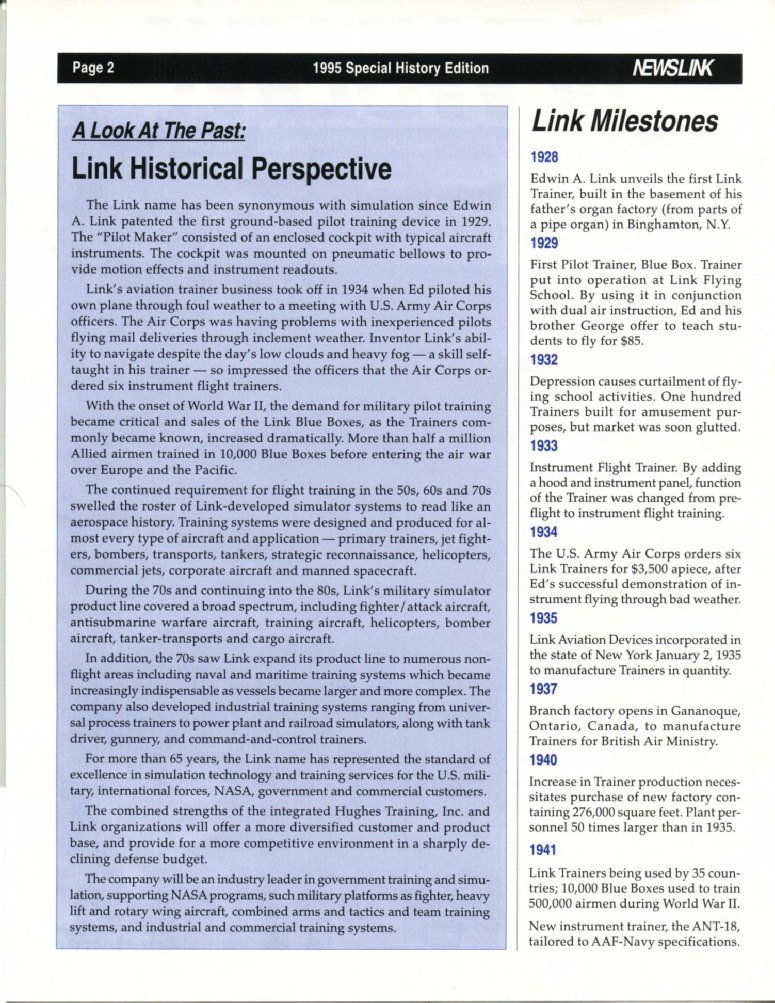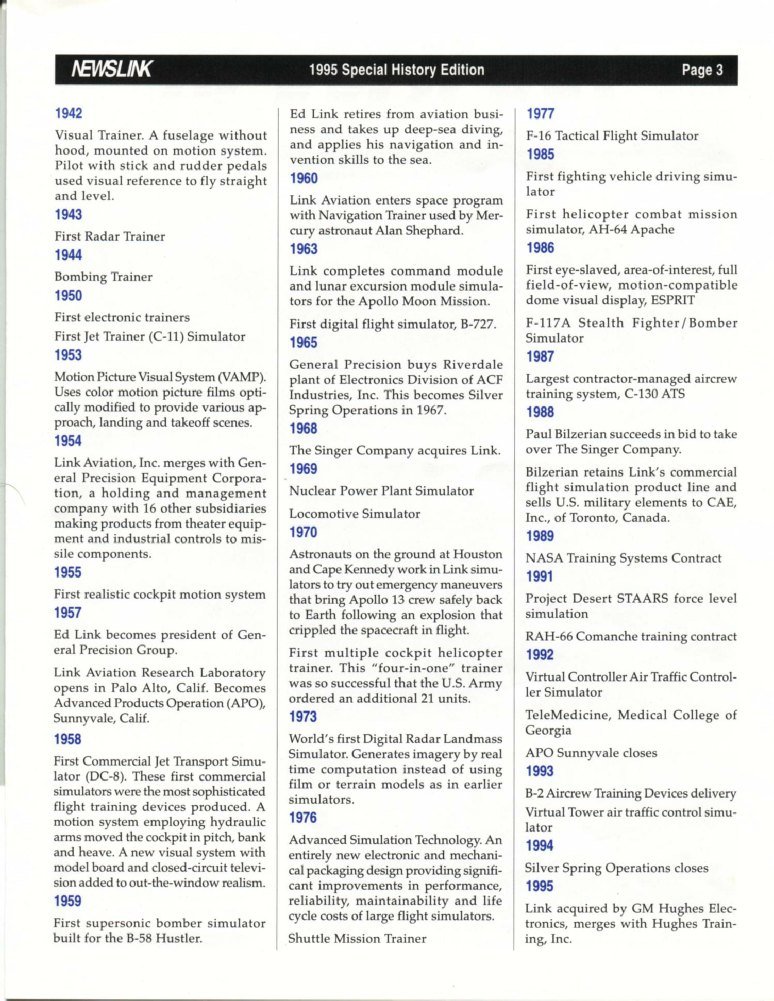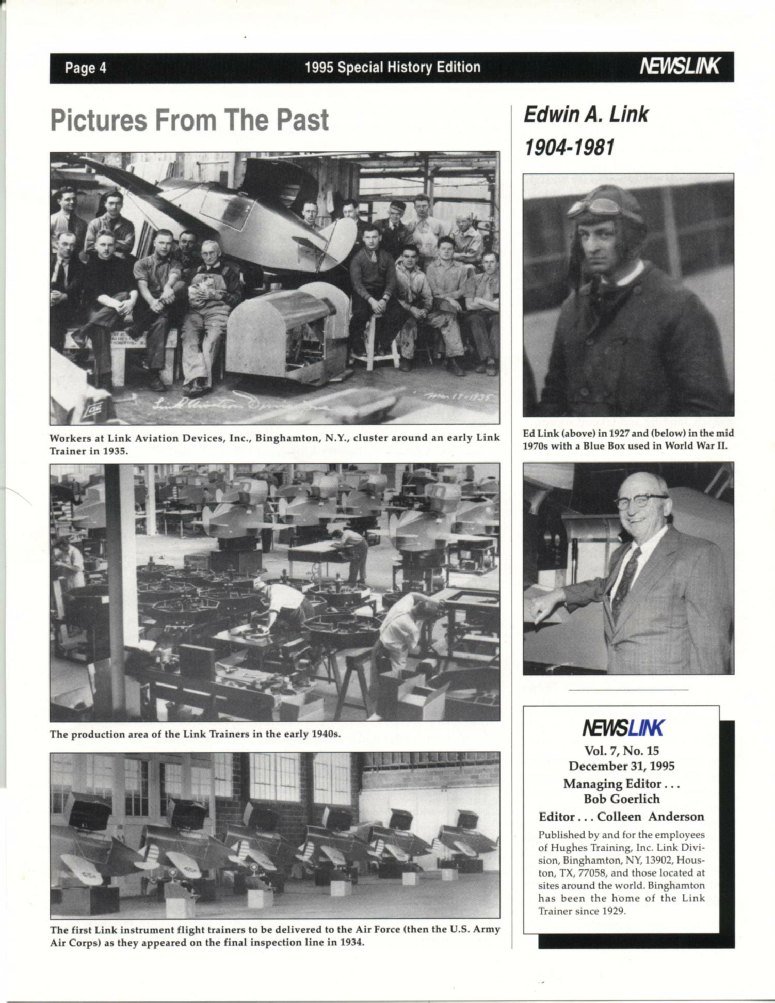Link
YNN reports on Ed Link's invention of flight simulation
Your Hometown: Binghamton
09/12/2010 10:11 AM YNN
By: Carmen Perez
When you think of aviation pioneers, names like Amelia Earhart or the Wright brothers may come to mind. Edwin Link is not a name usually associated with aviation history and neither is the City of Binghamton. In this week's edition of "Your Hometown," our Carmen Perez tells us how Binghamton's industrial past helped inspire the man whose invention has become the heart and soul of modern aerospace technology.
BINGHAMTON, N.Y. -- Broome County is most known in its past for being home to large corporations like IBM, but few know that Binghamton is actually the birth place of aviation simulation and it all began with one's boy's dream to fly in the basement of his father's piano factory right here in Downtown Binghamton.
"The simulation industry in Binghamton began in the early 1930s with the invention of the Link flight trainer affectionately known as the Blue Box and we have one of those behind me,” said Susan Sherwood, Executive Director Center for Technology and Innovation.
Edwin A. Link, now known as the Father of Flight simulation, had a passion for flying but not the wallet to support it. So instead of taking flying lessons he had to go to work in his father's piano factory in Downtown Binghamton, a job that was surprisingly technical.
"The story goes and we have heard this from a couple sources that he was sitting on an organ bellows at lunch in the factory and smiling and telling a joke and said you know this feels like flying and the light bulb went on and he thought about it and started putting it all together mostly using technology available in his father's factory,” said Sherwood.
Link wanted to use the flight simulators to train pilots how to fly using technology rather than the ground below them. His first major breakthrough came during the 1930s by way of the mail. The US Army Corps of Engineers were charged with delivering the mail but their pilots could not fly in bad weather.
"He packaged all those items to give pilots a sense of flying of the motion of how to control and also to learn the ramifications to your actions if you push the stick this way this is going to happen so you can practice in advance dangerous situations,” said Sherwood.
Pretty soon the aviation simulator, known to pilots as the blue box, was in every air training school in the United States. During World War II, Link produced around 10,000 simulators to train pilots, turning out one every 45 minutes.
"Pilots in the United States, Britain and even Japan and Germany who bought their trainers in the 1930s before the war started were all trained with Link trainers in one way or another,” said Sherwood.
As time went on, NASA began using Link's simulation technology to train the Apollo astronauts on their missions to the moon.
"The astronauts radioed back from the moon and said you know it seems like we've been here before and in large part it was because of the simulation and the training they got in the Link made Apollo mission simulators,” said Sherwood.
Today, Link simulators are providing training for pilots and aircrews on some of the world’s most sophisticated military aircrafts. Susan Sherwood is working on opening TechWorks, a museum that will honor Binghamton's technological past, especially Link's flight simulators.
Students at Binghamton University and Broome Community College worked with the techworks team to create this control module to help keep the area's simulation history alive.




